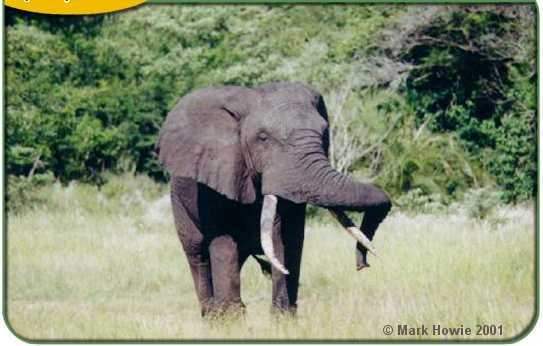by donnette thayer
Thursday, Apr. 03, 2003 at 2:47 PM
For the Elephants...

l023.jpg, image/jpeg, 543x346
We all know that elephants have a rich social life. In the wild, elephants work as a community. For example, when the herd is disturbed, it clusters around the matriarch and hides the calves in the middle. The matriarch decides whether to flee or charge. If the matriarch is wounded, the other elephants mill about in a panic. They usually refuse to abandon their leader no matter what.
Elephants in the herd may attempt to raise and support another elephant that has fallen. These remarkable creatures have even been observed carrying dead comrades and burying them under branches.
These facts of elephant psychology and behavior seem lost on the Los Angeles Zoo, who plan to remove 17-year resident elephant Ruby from her home with her friend Gita to go to the Knoxville Zoo to participate in an African Elephant breeding program. I appreciate the desire of the L.A. Zoo to help increase the numbers of African elephants, but taking Ruby away is a bad idea. There are several reasons that Ruby should remain at the Los Angeles Zoo.
1. The Los Angeles Zoo has a tragic history of losing elephants in transit. Three elephants have died due to the stress of zoo transport:
a. Tumai/Albert: In 1984, was unable to be moved at scheduled time because of over drugging, and was left in the sun to die chained, starved, dehydrated and partially rotting.
b. In 1986, Samson died during transportation, most likely from wrongly administered drugs. After refusing to stand up in the truck, Samson was hosed and electrically shocked until he stood up. Hours later he died.
c. Three attempts were made to move Hannibal during 1991/1992; this elephant refused to enter a moving truck and became aggressive. On the second
attempt, Hannibal went down, a state that is deadly to elephants. On the third attempt, he was heavily drugged and chained and became unable to rise,
but this time, nobody was paying attention. Hannibal died hours after being loaded on to the truck.
2. Ruby and Gita have been together for 17 years. Imagine losing a friend who has seen you through 17 years of imprisonment, which is essentially the
situation of life at the zoo for these magnificent creatures. Elephant experts point out an incident in which elephant friends who have been reunited after a twenty year separation recognized each other and become inseparable once again. This incident is documented on film. There are also cases of elephants who have died of grief after being separated from another member of their clan. Elephant experts who have watched Ruby and Gita say that the two have bonded deeply.
3. Gita arrived at the Los Angeles Zoo in 1959, making her at least 44 years old. Elephants have a lifespan of 60 years at the maximum. Gita, a gracious elderly lady, will move in with Tara. Tara has a long history of aggressive, belligerent behavior. She is responsible for knocking two different elephants into the moat, one of which died as a result. Sweet Gita will lose
a lifelong friend and move in with a murderous bully.
3. The zoo has a very sad history of lackadaisical treatment for these gentle behemoths. One week after Hannibal's death, a dead African elephant mysteriously appeared, floating in the Gulf of Mexico. The zoo's sketchy records do not specify any where or what with respect to Y's Guy, Pumbie (who shared a compound with Tara for some amount of time), Jobie, Pete, Pilar, Chamroen, and Pearl (no records at all). Elephant #08315 who was born at the zoo and died at age 7 months, Mighty Mouse who shipped out one year
after her arrival, having suffered tusk abscesses due to cement at the base of her tusk, Josephine, who shipped out in less than a year and is reported
to have had bleeding from base of her tusk.
We do know what happened to Joyce 1: Euthanized at approximately age 34 on 4/17/79 due to chronic foot problems including abscesses, soreness, and
oozing puss. N’Jogu: Euthanized at an approximate age of 18 on 8/19/77 due to a ventral abdominal edema and chronic lameness of front left elbow.
McClean, as you recall, died after being shoved into the moat by Tara. Sage was euthanized in 1984: Rear legs injured, vaginal irritation and “hopeless
prognosis given.” Annie died of salmonella poisoning, according to zoo officials. Annie slowly died without food or water, unattended. When the 24-hour surveillance tape was requested in writing immediately after Annie's death, the request was refused. The tape had been “inadvertently erased.”
Necropsy showed evidence of tuberculosis. Annie had been sick for about one year prior to her death. Calle, too, suffered from tuberculosis, and was
sent to San Francisco, where she has received thousands of dollars of medical treatments for her illness.
The students at New Roads High School in Santa Monica have sent a letter to Mayor Hahn requesting that Ruby remain at the Los Angeles Zoo with her
friend Gita. The lives of these animals is unhappy enough. Gita is not a young elephant. Please ask Mayor Hahn to allow Ruby to remain with Gita for
her golden years. It is little enough comfort for these poor wildborn animals who have spent a great portion their lives bringing pleasure to the children of Los Angeles.
MAYOR HAHN
City Hall
200 No. Spring St.
Los Angeles, CA 90012
Thanks,
donnette thayer
City of Angels Dog Rescue

